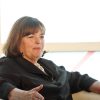In retrospect, Bob Dylan likened his 1974 reunion tour with The Band to Elvis Presley’s “Fat Elvis” period. It was powerful, sure, but it was nostalgia; creatively unsatisfying. And a cash grab. Ultimately, it showed him the way he didn’t want to go forward, as he recalled in 2004 in Chronicles, Vol.1.
Still, 1974 was a landmark year in rock ’n’ roll, and it was Bob Dylan and the Band who kicked it off in January, playing 40 shows during their six-week trek together—a groundbreaking feat in and of itself—often putting on matinee and evening arena shows to satisfy demand.
If, during his Thin Wild Mercury music period in the mid-1960s, Dylan had given songwriting and new vocabulary, and had created the look and attitude of the modern rock star, in 1974 he updated all of that for a new era, for good measure adding a tour that presaged the bloated, arena-filling tours that would become, and remain, a staple of the music business.
Dylan, who’d released a couple of laid-back country-tinged albums and had performed sparingly since his last tour with The Band in 1966, had signed a new record deal with David Geffen’s Asylum Records—leaving the storied Columbia label—and was about to have his first #1 record, Planet Waves, recorded with The Band. Geffen enlisted the legendary promoter Bill Graham to handle the organization of the entire tour, a highly unusual move at the time, with tickets sold via a mail in lottery. Dylan and The Band even traveled cross-country by private plane, a Boeing 720 passenger jet.
“It was a mythical tour, even at the time,” explains Rolling Stone’s David Browne, the author of the new book Talkin’ Greenwich Village: The Heady Rise and Slow Fall of America’s Bohemian Music Capital, which chronicles the fabled New York City neighborhood, and is particularly strong in how it deals with Dylan during the mid-’70s. “Dylan hadn’t toured in eight years, and, at least to my knowledge, none of it was filmed,” he adds. “Plus, it was the only tour he did with The Band after the ’60s, and it was a greatest hits tour, where Dylan was reintroducing himself to the world. All of those things together have given it this mystique, I think. When you add all those things up, it does give the tour this added allure.”
Of course, these weren’t the trailblazing, amphetamine-enhanced pied pipers of the 1966 tour, where at just about every stop they’d been booed. While everything that was frenetic and swinging about the ’60s was on full display on The 1966 Live Recordings box set, now, eight years later, the grim hangover that was the 1970s was upon everyone, and Dylan and The Band’s music and collective attitude while on the road early that year reflected all the weirdness, darkness and edginess that entailed.
A new box set, The 1974 Live Recordings, which includes 431 songs across 27 CDs, chronicles as much as any fan could (or perhaps should) need to hear from Dylan and The Band’s tour. But while most of the songs included are repeated many times over, it’s hard to imagine anyone getting bored. Because during the six-week run of shows, we get to hear the performers veer from edgy and almost shambolic on the first discs, to worn out but determined in the middle, and, finally, triumphant and maybe even a bit relieved on the last discs. The songs, too, metamorphosize. “Rainy Day Women 12 & 35,” “Forever Young” and “Just Like Tom Thumb’s Blues” are all picked apart and put back together again by their author, and here we get to hear that process happening in real time.

The 1974 Live Recordings celebrates the 50th anniversary of Bob Dylan’s return to touring that year.
Legacy Recordings
“A lot of the revelations on here are on the first five to 10 discs,” says Ray Padgett, the author of Pledging My Time: Conversations with Bob Dylan Band Members. “Hearing the trajectory of the playing, and hearing Dylan’s vocals go from nuanced to beautiful to almost shouting practically every word, is fun to follow along show by show.”
The Band, of course, were a force in their own right by 1974, having released the era-defining albums Music from Big Pink, The Band and Stage Fright. But perhaps even more importantly, they had backed Dylan on that legendary ’66 tour. So, even if it was Dylan everyone was really coming to see, there was a healthy dose of nostalgia afoot.
“The year 1974 is interesting, because that was the year that was the beginning of pop culture nostalgia,” says Browne. “Because you had not just Dylan and The Band reuniting for a greatest hits tour of songs from the sixties, but you had Crosby, Stills, Nash and Young reuniting for their tour, you had American Graffiti, you had Happy Days starting, Grease was on Broadway, a hit musical. Suddenly, in 1974, the culture, for whatever mysterious reason, was looking back at the mid-to-late-’50s to the early-’60s. In fact, one of the big summer hits that year was a song called “Beach Baby” by The First Class, which was basically a fake Beach Boys song, who, ironically, made their big comeback with the greatest hits double album Endless Summer. That was 1974.”
Perhaps nowhere is that nostalgia more evident than during Dylan’s nightly acoustic sets. Older and certainly more world-weary than the man who had wowed and confounded audiences in the previous decade, Dylan attacks some of his most famous songs with a ferociousness that simply wills you to listen. Suddenly, the songs that had made him the voice of a generation seem recast for the weird and wild 1970s, with a keen sense of the foreboding that seemed to be everywhere.
“You can argue that this period—the Planet Waves album and the ’74 tour—is kind of an official entry point into Dylan’s second act as an artist,” says Elizabeth Nelson, who wrote the liner notes for The 1974 Live Recordings. “He has become a legend, flown too close to the sun, retreated into domesticity, and now is officially reentering the great public arena, a wizened gladiator. The whole period is one wherein he essentially signs the blood pact of being a public person forever.”
The recordings themselves are a mixture of crystal-clear mixes from multi-track tapes, to the occasional muddy and hissy board mix. But that’s no doubt the price you pay for such completeness. Besides, the highlights are plentiful: the opening night in Chicago, the Jan. 7 show at Philly’s Spectrum, the Jan. 27 matinee in Houston, and the final night in Los Angeles.
“What struck me, beyond the normal stuff you would expect to hear on a long tour—the players tightening up as the shows unfold, and then exhaling a bit—was how much they seemed to start out the tour on almost a war footing with the audience,” adds Nelson. “Robbie Robertson talks in the documentary Once Were Brothers about how strange and traumatizing being booed off stage practically every night in 1966 was, and you can tell that there was still some real scar tissue there. When they come out the first night and start with ‘Hero Blues,’ the deepest of deep cuts, it’s almost like they’re testing the audience to see how deep their loyalties run. As the tour progresses, and they evolve a more fan friendly set, you can almost sense the growing realization and relief that they are being well received.”
“It’s a strange thing, and you don’t sense that the question of that trust between performer and audience is ever fully resolved,” she continues. “Even at its most crowd pleasing, the shows run on a razor’s edge of intensity.”











